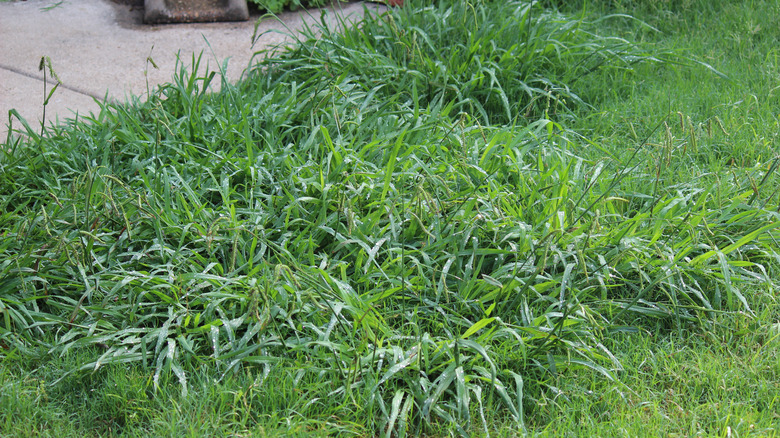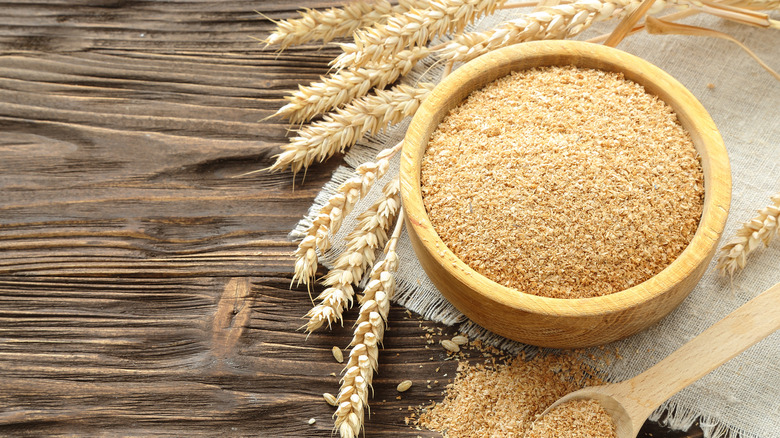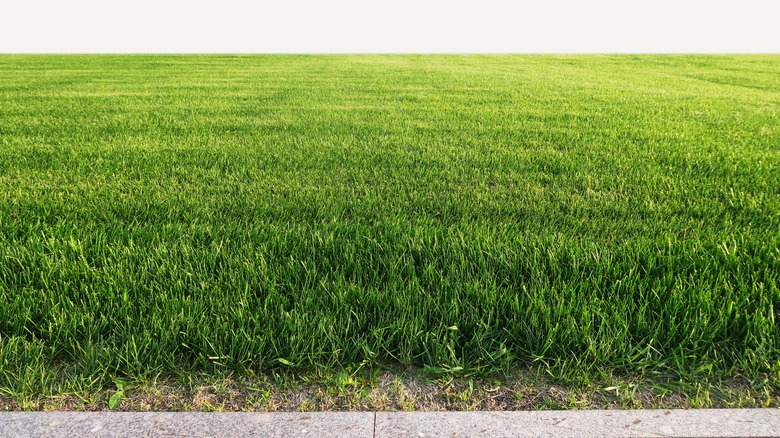How To Use Corn Gluten To Keep Weeds Off Your Lawn
We may receive a commission on purchases made from links.
Growing your lawn to perfection makes you feel successful, but when weeds start popping up unexpectedly, it can feel like all your hard work to maintain a healthy lawn got kicked to the curb. While there are many ways to eliminate those pesky weeds, some methods can harm your lawn. However, corn gluten can eliminate weeds while leaving your grass alone. Corn gluten is a natural by-product that contains protein and nitrogen to control weeds. Conversely, weed fertilizers contain strong chemicals, and even though they'll eliminate weeds, they can also harm your grass. Similarly, if you use cardboard to control your weeds, it'll create brown spots on your lawn.
Corn gluten is safe for animals and humans and has been used as a supplement for livestock on farms due to its protein content. If you sprinkle it over your weeds, your pets won't be harmed if they go near it. At the same time, you want them to avoid eating corn gluten so that it benefits your lawn and doesn't slow down the control process. Here's how to use corn gluten on your grass.
How to use corn gluten
When applying corn gluten to your weeds, it's crucial to get the timing right because it won't stop the seeds from germinating — it will prevent the seeds from growing roots. Sprinkle corn gluten in late March to mid-April before the weed seeds can grow roots. Then, to get the best results, apply the protein a few times throughout the year to prevent weeds or crabgrass from growing. Ideally, one application will control weed growth for four to six weeks, so you might have to reapply in the late summer or monthly, depending on the growth rate.
You can purchase corn gluten from Amazon or a local home improvement store. There are three different types — granulated, powdered, and pelletized — and they all work the same. Sprinkle it evenly over your lawn: 20 pounds of corn gluten per 1,000 square feet, according to Iowa State University. Water the corn gluten after you've spread it on the grass to blend with the soil and let it dry for a couple of days so the seedlings dry out and die. Again, how you time the application will determine the results you get on the first application, but you'll still want to reapply a few more times to improve the weed control.
Benefits and downsides of using corn gluten
We mentioned how corn gluten is non-toxic to humans and animals when eliminating weeds, but it has many other benefits. For example, spreading it over your entire lawn helps develop thicker grass, creating barriers that fend off weed growth. It can also be used as a natural fertilizer to help grow healthier grass and provide a stunning green lawn. Moreover, corn gluten can be used in other areas where weeds or crabgrass might grow, such as flower or vegetable gardens.
While corn gluten can help keep your lawn and gardens looking their best, buying the product can be costly. It's more expensive than other pre-emergent herbicides because you'll need to apply it more frequently. Also, your lawn's size will determine how much corn gluten you'll need to repeatedly buy. Sticking to the application rate of 20 pounds per 1,000 square feet is vital to see effective results. You can save some money and time on liquid corn gluten, but it's still costlier than other herbicides. If you find cheaper versions, ensure they contain 60% protein — otherwise, they won't work to eliminate your yard's weeds.


